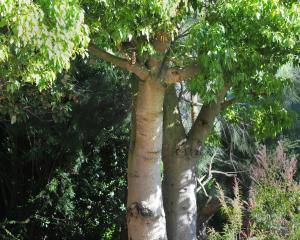Ficus are grown mostly for their foliage or as shade trees. However, in New Zealand they are often found as house plants, although eventually they get far too big for the home or office.
About five years ago I came across a species I had not seen before, Ficus dammaropsis. It was only a small plant with about three leaves on it, but those leaves were very dramatic, large, heavily pleated with bright red veins. It was a show-stopper and I knew straight away Dunedin Botanic Garden had to have a specimen.
But that was easier said than done. After contacting many subtropical nurseries to see if I could purchase one I discovered that, although they had them growing in their gardens, no-one seemed to sell them or have any success propagating one. It is a very difficult plant to propagate and is mostly propagated by air layers. Finally, after three or four years I managed to track one down.
Called the dinner-plate fig, it has leaves larger than those of the average dinner plate and will grow into a small rounded tree, often wider than high. It produces rounded fruit which turn deep purple when ripe.
Native to the highlands of Papua New Guinea, it can be grown outdoors in the Far North. At the Botanic Garden it can be seen in the centre of the central house of the Winter Garden glasshouse.
• Stephen Bishop is curator of the Winter Garden glasshouse at Dunedin Botanic Garden.











